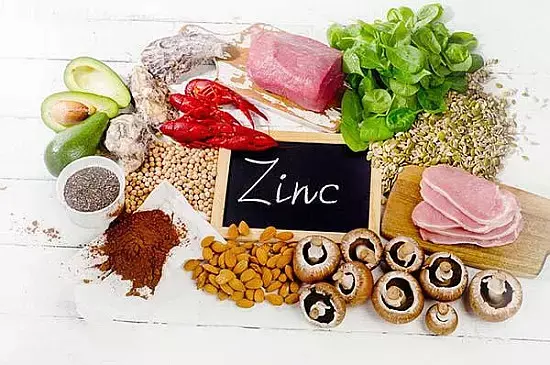- Home
- Medical news & Guidelines
- Anesthesiology
- Cardiology and CTVS
- Critical Care
- Dentistry
- Dermatology
- Diabetes and Endocrinology
- ENT
- Gastroenterology
- Medicine
- Nephrology
- Neurology
- Obstretics-Gynaecology
- Oncology
- Ophthalmology
- Orthopaedics
- Pediatrics-Neonatology
- Psychiatry
- Pulmonology
- Radiology
- Surgery
- Urology
- Laboratory Medicine
- Diet
- Nursing
- Paramedical
- Physiotherapy
- Health news
- Fact Check
- Bone Health Fact Check
- Brain Health Fact Check
- Cancer Related Fact Check
- Child Care Fact Check
- Dental and oral health fact check
- Diabetes and metabolic health fact check
- Diet and Nutrition Fact Check
- Eye and ENT Care Fact Check
- Fitness fact check
- Gut health fact check
- Heart health fact check
- Kidney health fact check
- Medical education fact check
- Men's health fact check
- Respiratory fact check
- Skin and hair care fact check
- Vaccine and Immunization fact check
- Women's health fact check
- AYUSH
- State News
- Andaman and Nicobar Islands
- Andhra Pradesh
- Arunachal Pradesh
- Assam
- Bihar
- Chandigarh
- Chattisgarh
- Dadra and Nagar Haveli
- Daman and Diu
- Delhi
- Goa
- Gujarat
- Haryana
- Himachal Pradesh
- Jammu & Kashmir
- Jharkhand
- Karnataka
- Kerala
- Ladakh
- Lakshadweep
- Madhya Pradesh
- Maharashtra
- Manipur
- Meghalaya
- Mizoram
- Nagaland
- Odisha
- Puducherry
- Punjab
- Rajasthan
- Sikkim
- Tamil Nadu
- Telangana
- Tripura
- Uttar Pradesh
- Uttrakhand
- West Bengal
- Medical Education
- Industry
Suboptimal Serum Zinc levels may contribute to increased risk of bone fractures in postmenopausal women: study

Zahra Bahadoran et al conducted a study to assess the association between serum zinc (SZn) concentration and fracture risk in postmenopausal women.
Women (n = 851) with a history of natural, premature, or surgical menopause who had completed data, including SZn concentrations at baseline, were included and followed through for the incidence of any fracture requiring inpatient care. Potential non-linear and dose–response associations between SZn and fracture risk were assessed using a restricted cubic spline model (RCS) in Cox regression with the likelihood ratio test (LRT). Multivariable Cox proportional hazard models were used to estimate adjusted hazard ratios (HRs) and 95% confidence intervals (CIs) of fractures across the categories of SZn [< 86, 86–135 (as reference), and ≥ 135 μg/dL].
The key findings of the study were:
• During a median follow-up period of 8.8 years (interquartile range: 8.1–9.2 years), 4.3% of postmenopausal women (with a mean age of 61.4 +/- 8.6 years) experienced a new incident fracture.
• The mean of baseline SZn concentration was 113 +/- 39.3 μg/dL.
• The LRT indicated no significant non-linear association (P = 0.176) and no evidence of a dose–response relationship (P = 0.448) between SZn and fracture risk.
• Using the categorical approach, the multivariable-adjusted Cox model showed that postmenopausal women with SZn concentrations below 86 μg/dL had a significantly increased risk of fracture compared to those within the reference range (86–135 μg/dL), with an HR of 2.29 (95% CI = 1.02–5.16, P = 0.044).
• SZn concentrations exceeding the reference range (≥ 135 μg/dL) were not associated with risk of fractures (HR = 1.47, 95% CI = 0.61–3.58).
“In conclusion, this prospective study provides novel evidence linking suboptimal SZn concentrations to an increased risk of bone fractures in postmenopausal women, highlighting zinc status as a potentially modifiable risk factor in this high-risk population. The absence of a continuous dose–response association, together with the slight, nonsignificant increase in fracture risk at SZn concentrations above the reference range, suggests that while insufficient zinc clearly elevates risk and requires attention, excess zinc levels may also be potentially harmful.
These findings underscore the importance of maintaining zinc within the physiological reference range, indicating that routine dietary or supplemental zinc intake beyond physiological requirements may not confer additional benefit. These findings have significant clinical and public health implications, suggesting that assessment of zinc status and targeted zinc supplementation could be integrated into the management of osteoporosis and prevention of fractures for postmenopausal women. Given the high prevalence of zinc deficiency in postmenopausal women, zinc supplementation may serve as an effective strategy to support bone quality and reduce fracture risk” the authors opined.
Further reading:
Association between serum zinc concentration and fracture risk in postmenopausal women: a 9‑year cohort study Zahra Bahadoran et al Journal of Bone and Mineral Metabolism https://doi.org/10.1007/s00774-025-01645-4
MBBS, Dip. Ortho, DNB ortho, MNAMS
Dr Supreeth D R (MBBS, Dip. Ortho, DNB ortho, MNAMS) is a practicing orthopedician with interest in medical research and publishing articles. He completed MBBS from mysore medical college, dip ortho from Trivandrum medical college and sec. DNB from Manipal Hospital, Bengaluru. He has expirence of 7years in the field of orthopedics. He has presented scientific papers & posters in various state, national and international conferences. His interest in writing articles lead the way to join medical dialogues. He can be contacted at editorial@medicaldialogues.in.


